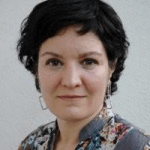The EU highlights 4 projects on environmental observation in which CREAF is involved
In its periodic report of research results Pack Cordis, the European Union highlights 9 projects funded by Horizon 2020 on environmental observation, 4 of wich involve CREAF.
The 4 projects involving CREAF are Ground Truth 2.0, ECOPotential, NextGEOSS and e-shape, initiatives on environmental observation that contribute to providing consistent information on climate change, the health of the planet and the impact of human activity. Its ultimate will is to contribute to global efforts to create a global observing network - from the GEO initiative and the Copernicus program - aimed at meeting people's needs and supporting better evidence-based policy making.
For Joan Masó, researcher at CREAF and a member of Grumets, the presence of the 4 projects "demonstrates our involvement and leadership in promoting research in innovative methods aimed at environmental observation". As well as that "we are capable of integrating Earth observation through remote sensing with new ways of generating knowledge, like the citizen science”.
As for Ground Truth 2.0, it has consisted of creating a methodology to generate citizen observatories for environmental observation, located 4 in Europe and 2 in Africa. Its intention is to actively involve the public to collect and use environmental observation data to monitor, for example, realities such as floods, droughts and changes in land use. CREAF has provided the interoperability component and a tool to control the data quality displayed by the observatories.
ECOPotential, on the other hand, uses environmental observation data to monitor and draw conclusions about ecosystem changes in protected areas. It focuses its activity on internationally recognized protected areas and observes the Earth through remote sensing and field measurements, data analysis and modelling of current and future ecosystem conditions and services. CREAF leads and coordinates remote sensing activities and a data viewer for all protected areas in the project.
NextGEOSS has developed a European and national data centre and platform on environmental observation, available from the virtual cloud and aimed at contributing to the Sustainable Development Goals. In this project, CREAF collaborates with the UAB to provide a system for users to assess the data (Geospatial User Feedback), integrated into the NiMMbus website.
The recently started e-shape project aims to bring together Earth observation resources to clearly contribute to Europe positioning itself as a global force in this discipline. Therefore, it means promoting the Copernicus initiative (jointly between the European Space Agency and the European Commission) and improving the data capture of GEO assets by users. It involves 55 partners and works on 7 thematic areas aligned with the Sustainable Development Goals. CREAF's intervention in this case consists of processing remote sensing data for the biodiversity theme line.
The other 5 projects highlighted in the European Commission report are Grow, AtlantOS, GEO-Cradle, Landsense and Scent. CREAF researcher Joan Masó is part of the advisory council for the Landsense and GEO-Cardle projects.
Environmental observation is essential to monitor ecosystems, the sustainability of agriculture, food security, the potential risk of natural disasters, to manage energy and mineral resources, as well as infrastructure and transportation, among many others. Today climate change and the Green Deal (the EU's plan to make the European economy sustainable) are already using observational data, although their potential is considered to be much greater. The projects included in the European Union report (and especially e-shape) actively contribute to promoting the EuroGEO initiative, which is part of the Group on Earth Observations (GEO), a global network that aims to build a Global Earth Observation System of Systems (GEOSS).







